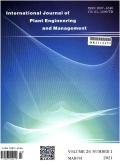Upgrade and Shakedown Test of a High Temperature Fluoride Salt Test Loop
International Journal of Plant Engineering and Management
Pub Date : 2018-07-22
DOI:10.1115/ICONE26-81222
引用次数: 1
Abstract
A FLiNaK high temperature test loop, which was designed to support the Thorium Molten Salt Reactor (TMSR) program, was constructed in 2012 and is the largest engineering-scale fluoride loop in the world. The loop is built of Hastelloy C276 and is capable of operating at the flow rate up to 25m3/h and at the temperature up to 650°C. It consists of an overhung impeller sump-type centrifugal pump, an electric heater, a heat exchanger, a freeze valve and a mechanical one, a storage tank, etc. Salt purification was conducted in batch mode before it was transferred to and then stored in the storage tank. The facility was upgraded in three ways last year, with aims of testing a 30kW electric heater and supporting the heat transfer experiment in heat exchanger. Firstly, an original 100kW electric heater was replaced with a 335kW one to compensate the overlarge heat loss in the radiator. A pressure transmitter was subsequently installed in the inlet pipe of this updated heater. Finally, a new 30kW electric heater was installed between the pump and radiator, the purpose of which was to verify the core’s convective heat transfer behavior of a simulator design of TMSR. Immediately after these above works, shakedown test of the loop was carried out step by step. At first the storage tank was gradually preheated to 500°C so as to melt the frozen salt. Afterwards, in order to make the operation of transferring salt from storage tank to loop achievable, the loop system was also preheated to a relatively higher temperature 530°C. Since the nickel-base alloy can be severely corroded by the FLiNaK salt once the moisture and oxygen concentration is high, vacuum pumping and argon purging of the entire system were alternatively performed throughout the preheating process, with the effect of controlling them to be lower than 100ppm. Once the salt was transferred into the loop, the pump was immediately put into service. At the very beginning of operation process, it was found that flow rate in the main piping could not be precisely measured by the ultrasonic flow meter. Ten days later, the pump’s dry running gas seal was out of order. As a result, the loop had to be closed down to resolve these issues.高温氟盐试验回路的升级调试
为支持钍熔盐反应堆(TMSR)计划而设计的弗林纳克高温测试回路于2012年建成,是世界上最大的工程规模氟化物回路。该回路由哈氏合金C276制成,能够以高达25m3/h的流速和高达650°C的温度运行。它由悬垂式叶轮污壳式离心泵、电加热器、热交换器、冷冻阀和机械冷冻阀、储罐等组成。盐的净化是分批进行的,然后转移到储罐中储存。该设施去年从三个方面进行了升级,目的是测试一台30kW的电加热器,并支持换热器的传热实验。首先,将原来的100kW电加热器更换为335kW电加热器,以补偿散热器中过大的热量损失。一个压力变送器随后被安装在这个更新后的加热器的进水管中。最后,在泵和散热器之间安装了一个新的30kW电加热器,目的是验证TMSR模拟器设计的堆芯对流换热行为。在完成上述工作后,对回路进行了逐步安定试验。首先将储罐逐渐预热到500℃,使冷冻盐融化。之后,为了使盐从储罐转移到回路的操作能够实现,回路系统也被预热到530℃的相对较高的温度。由于镍基合金在水分和氧气浓度较高的情况下会受到FLiNaK盐的严重腐蚀,因此在整个预热过程中交替进行整个系统的抽真空和吹氩,将其控制在100ppm以下。一旦盐被转移到循环中,泵立即投入使用。在运行过程一开始,就发现超声波流量计无法精确测量主管道的流量。10天后,泵的干运转气密封出现故障。因此,必须关闭循环以解决这些问题。
本文章由计算机程序翻译,如有差异,请以英文原文为准。
求助全文
约1分钟内获得全文
求助全文

 求助内容:
求助内容: 应助结果提醒方式:
应助结果提醒方式:


